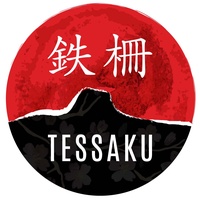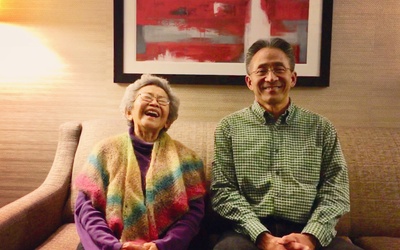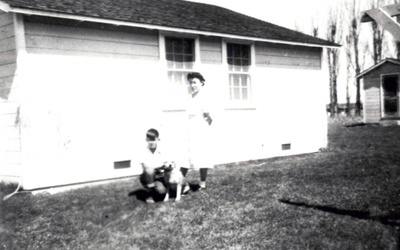Tessaku

Tessaku was the name of a short-lived magazine published at the Tule Lake concentration camp during World War II. It also means “barbed wire.” This series brings to light stories of the Japanese American internment, illuminating those that haven’t been told with intimate and honest conversation. Tessaku brings the consequences of racial hysteria to the foreground, as we enter into a cultural and political era where lessons of the past must be remembered.
Stories from this series
Paul and Alice Takemoto - Part 2
March 1, 2018 • Emiko Tsuchida
Read Part 1 >> Do you speak Japanese? Alice Takemoto (AT): Just like a second grader. So when I went there, we were there for three months and we went to about seven different universities and since Ken couldn’t speak Japanese, so I spoke in my kitchen Japanese. You know, the immigration stopped at a certain point so the people didn’t come from Japan, so my mother and father’s speech is what they called the Meiji Era. So I learned …
Paul and Alice Takemoto - Part 1
Feb. 28, 2018 • Emiko Tsuchida
“I grew up thinking women were stronger than men in terms of the absence of anger and self-pity. Absence of bitterness.” – Paul Takemoto If you ever have the pleasure of meeting Alice and Paul Takemoto, you will be in the presence of an endearing mother and son relationship. Sitting with them felt like a reunion with old friends, full of unexplainable but palpable comfort. Alice has a voice so sweet, she could deliver bad news and you’d receive it …
James Tanaka - Part 2
Jan. 31, 2018 • Emiko Tsuchida
Read Part 1 >> Did you get the sense that for whatever reason, Minidoka’s security felt more relaxed than the other camps? In my diggings I found the April 7th meeting of DeWitt, Eisenhower, and the ten Western governors in Salt Lake City. And on page four it says ‘distinction between internment and evacuation.’ It spelled out clearly the difference between the two. And then, poor Mr. Eisenhower had a problem with sleeping because knowing American citizens were locked up …
James Tanaka - Part 1
Jan. 30, 2018 • Emiko Tsuchida
"The guard tower had a heavy duty machine gun. Of course no one was standing directly behind it but it looked in. Later as an adult I learned another reason they locked us up was for our protection. If somebody's going to hurt us, shouldn't it be pointing out?" - James Tanaka As a longtime docent at the Japanese American National Museum in Los Angeles, James Tanaka is a wealth of knowledge. He knows government documents, dates and WWII particulars …
Mitsuki Mikki Tsuchida - Part 3
Jan. 10, 2018 • Emiko Tsuchida
Read Part 2 >> Can you tell me about the picture of you and your friend looking at the fire? My friend and I could see the fire on the opposite side of the camp. It was the auditorium where they used to show movies. We could see the flames and the smoke just billowing in that direction, and of course hear the sirens in the distance. So we were watching and we could see the design of the camp. …
Mitsuki Mikki Tsuchida - Part 2
Jan. 9, 2018 • Emiko Tsuchida
Read Part 1 >> What about the day you left for the assembly center? All I remember was waiting at the train station on one side of a line. There were all these ruddy face Caucasians, all just looked red to me. All I remember is that these guys were holding guns. They weren’t pointing them, but what were we going to do? They didn’t even have to carry it. After that I noticed the difference. Why are we standing …








